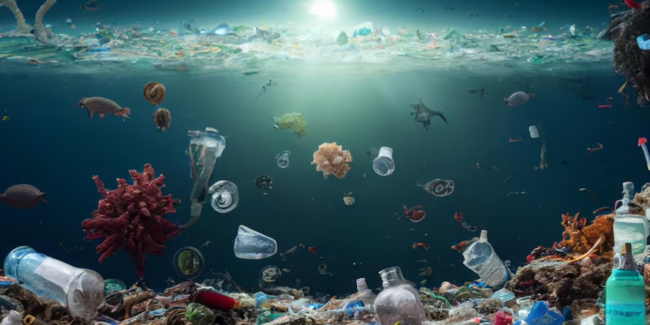Plastic waste has become one of the most pressing environmental issues of our time, with severe consequences for marine ecosystems. Every year, millions of tons of plastic waste enter the oceans, threatening marine life, disrupting ecosystems, and contributing to pollution. This article explores the impact of plastic waste on marine ecosystems and outlines effective solutions and strategies to combat this growing crisis.
The Scope of the Plastic Waste Problem
The scale of plastic pollution in the oceans is staggering. It is estimated that around 8 million tons of plastic waste end up in the oceans annually. This waste comes from a variety of sources, including improperly disposed of single-use plastics, industrial waste, and microplastics from consumer products. Once in the ocean, plastic can persist for hundreds of years, breaking down into smaller particles but never fully degrading.
Plastic waste affects all levels of marine ecosystems, from the tiniest plankton to the largest whales. Animals often mistake plastic for food, leading to ingestion, which can cause internal injuries, starvation, and death. Additionally, plastic waste can entangle marine life, restricting movement and leading to drowning or severe injuries.

The Impact on Marine Life
The impact of plastic waste on marine life is devastating. Here are some of the key ways in which plastic pollution affects marine ecosystems:
- Ingestion: Marine animals, including fish, seabirds, and turtles, often mistake plastic debris for food. Ingested plastic can block digestive tracts, leading to malnutrition, starvation, and often death. Microplastics, tiny particles less than 5mm in size, are particularly harmful as they can be ingested by even the smallest marine organisms, entering the food chain and impacting larger predators.
- Entanglement: Plastic waste, such as discarded fishing nets, plastic bags, and six-pack rings, can entangle marine animals, leading to injury or death. Entangled animals may drown if they are unable to reach the surface for air, or they may suffer from restricted movement, leading to decreased ability to hunt or evade predators.
- Habitat Disruption: Plastic waste accumulates in various marine habitats, including coral reefs, mangroves, and seagrass beds. This accumulation can smother habitats, reduce oxygen levels, and hinder the growth of essential marine plants. Coral reefs, in particular, are highly susceptible to damage from plastic debris, which can cause physical harm and promote the growth of harmful pathogens.
- Chemical Contamination: Plastics are made from petrochemicals and often contain harmful additives such as bisphenol A (BPA), phthalates, and flame retardants. These chemicals can leach into the water, posing a risk to marine life. Additionally, plastics can absorb toxins from the surrounding water, becoming carriers of pollutants that can enter the food chain when ingested by marine organisms.
Global Solutions to Combat Plastic Waste
Addressing the plastic waste crisis requires a multifaceted approach that includes reducing plastic production, improving waste management, and promoting recycling and cleanup efforts. Here are some key strategies to combat plastic waste in marine ecosystems:
- Reduce Single-Use Plastics: One of the most effective ways to reduce plastic waste is to minimize the use of single-use plastics, such as plastic bags, straws, and bottles. Governments and businesses can play a significant role by implementing bans or restrictions on these items and encouraging the use of sustainable alternatives.
- Improve Waste Management: Effective waste management is crucial in preventing plastic from entering the oceans. This includes improving recycling infrastructure, implementing extended producer responsibility (EPR) programs, and promoting proper waste disposal practices among consumers.
- Promote Recycling and Circular Economy: Recycling is a key component of reducing plastic waste. Encouraging the recycling of plastics and supporting the development of a circular economy—where materials are reused and recycled rather than discarded—can significantly reduce the amount of plastic waste that ends up in the oceans.
- Support Cleanup Initiatives: Cleanup efforts, both on land and at sea, are essential in addressing the existing plastic pollution. Organizations like The Ocean Cleanup and coastal cleanup programs mobilize volunteers and resources to remove plastic waste from beaches and oceans, reducing the immediate threat to marine life.
- Raise Awareness and Education: Public awareness and education are vital in changing consumer behavior and promoting more sustainable practices. Educational campaigns, community programs, and media coverage can help inform the public about the impact of plastic waste on marine ecosystems and the steps they can take to reduce their plastic footprint.
COMMENTS